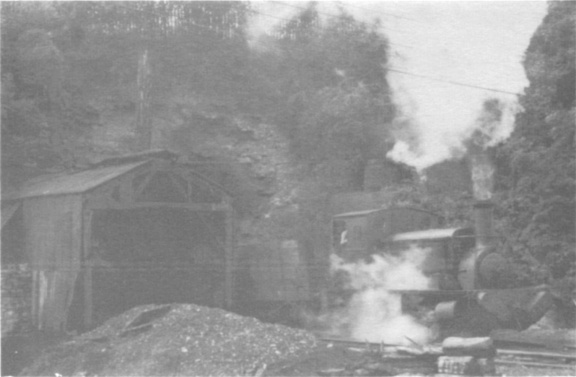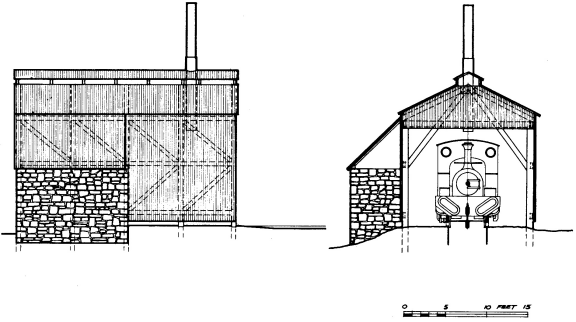
| THE INDUSTRIAL RAILWAY RECORD |
© DECEMBER 1966 |
A SMALL INDUSTRIAL
LOCOMOTIVE SHED
SYDNEY A. LELEUX
(Photograph by the Author)
Industrial locomotive sheds vary greatly in size and construction, from small buildings holding one engine, to palatial ones such as that at Pen Green, Corby (Stewarts & Lloyds Minerals Ltd.) which holds fifty. Some systems do not even bother with a shed, storing their engines in the open or under a convenient bridge.
Typical of the smaller sheds was the one at Aycliffe Limeworks, County Durham, where the locomotive was replaced by a road tractor in 1962. Holding one 0−4−0 saddle tank, the building was 25ft 6in long, and 15ft 10in wide. It was made of corrugated iron sheeting mounted on a frame of 9in by 3in timber. The frame comprised four sets of verticals, joined by horizontal members top, bottom and middle, dividing the side into approximate squares. A brace crossed one diagonal of each of the squares so formed. A clerestory, topped by an iron pipe, let out the smoke. At the back of the shed one panel of the wall had been removed and an extension to store coal built of dry−stone walling. A sheet of corrugated iron served as a roof for the extension.


Roger West‘s drawing of the shed, reproduced above, is based on sketches and dimensions supplied by the Author. The photograph [above] illustrates the shed as it was in August 1960, the passing train en route from the quarry is hauled by AYRES0ME No.2, built by Manning Wardle (number 1903) in 1916.